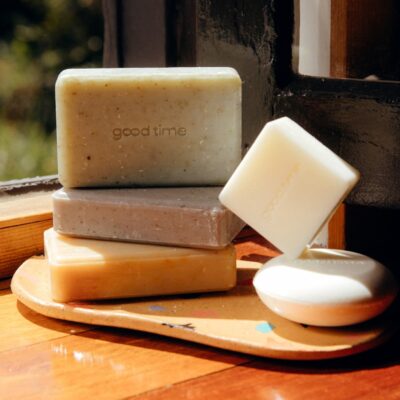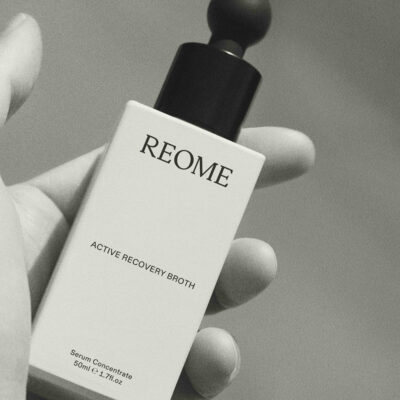
Five Things Brands Need To Consider To Be Retail Ready
Direct-to-consumer distribution has been a go-to strategy for cash-strapped startups because of its low barriers to entry, but retail still has major benefits for business.
Even as some brick-and-mortar concepts, particularly department stores, struggle, many experts predict in-person shopping will bounce back as the pandemic eases, and it’s extremely difficult to scale a brand significantly without a retail foothold. In a January episode of Beauty Independent’s webinar series In Conversation, Margaret de Heinrich de Omorovicza, co-founder of skincare brand Omorovicza, detailed that, when a brand partners with a large department store, it can sell hundreds of thousands, if not millions, of units. She said, “The cost of doing business is incredibly high, almost crippling on my side, but, again, you’re often getting that customer for the second and third time, and that’s where you make your money.”
Entering multi-door brick-and-mortar retailers can be complex as well as costly, and budding indie brands frequently need help navigating the process. Shelby Olsen, brand acquisition lead of Adit, a program operated by Beauty Independent parent company Indie Beauty Media Group that assists retailers with building their beauty assortments, regularly susses out rising beauty and wellness brands to determine if they’re prepared for the world’s leading retailers. She says beauty entrepreneurs of all experience levels can have trouble understanding what it takes to be retail ready in the eyes of a buyer.
“Retailers have a list of criteria, from packaging and ingredient specifications to backend logistics needs and, while each one has different priorities, there are common practices that everyone looks for,” says Olsen, a former beauty buyer for ShopHQ. “Since COVID, the rules of engagement have really changed. The competition is so fierce and, if you lack a retail background right out of the gate, you’re at a disadvantage because you don’t understand the landscape.”
Adit offers brand participants one-on-one pitch training, retailer-specific insights and information on assortment needs. “We’re literally handing their meeting to them on a platter and saying here’s how to be successful,” says Natasha Goldberg, who’s on the retail success team at Adit. She interfaces with retailers in the program to glean data points like ideal price ranges, ingredient standards, category preferences and selection gaps to ascertain the best brand fits. Adit debuted in November of last year and has secured 15 retailer partners, including ASOS, Bluemercury, Credo, Ulta Beauty, Neiman Marcus and Whole Foods. Based on feedback from them, Goldberg and Olsen identified five investments brands should make in order to be retail ready.
1. Quality websites and product photography
Similar to retailers, Olsen begins her assessments of brands by examining their websites and social media channels. At a minimum, she checks for high-resolution product shots, and pictures of labels and packaging. Close-up photos of a product’s texture and images of how cosmetic colors appear on an array of skin tones are table stakes. Stylized aspirational photography is an added bonus, especially if a brand falls into the lifestyle and wellness categories. Ingredients, product descriptions and recommended uses should be clearly listed on a brand’s site. Links to social media accounts and brand contact information should be displayed in visible spots, too.
2. Professional packaging
Packaging is one of the most important elements to buyers when they’re deciding on a brand. “The quality and aesthetic certainly matters. It can make or break you,” emphasizes Olsen. Stick-on labels and chintzy cardboard boxes can detract from the magic inside the bottle. “Your packaging should look like it was done by a professional, even if it wasn’t,” instructs Olsen. She suggests founders walk down the aisles of their target retailers and inspect the design of products on the shelves. The goal isn’t to replicate existing brands, but rather to get a sense of what role they play on the shelves and the attributes that distinguish the packaging of other brands. Goldberg says, “During our meeting with Ulta, one of the buyers noted that, if you look at a product and from the outside and you can’t tell what it is or what it does for you, that is not considered retail ready.”
3. Cohesive brand identity
A brand’s Instagram page, packaging and site design should present a united front to convey its concept to a target audience. “Is it a premium-priced apothecary skincare brand? Is it trendy cosmetics aimed at gen Z?” asks Olsen. “Retailers want to see a defined story and messaging across all touch points. Sometimes brands come to us with packaging that evokes one feeling, a website that says something else and an Instagram page that is trying to tap into another demographic.”
Authentic storytelling is an advantage indies have over big corporate brands, and Olsen underscores retailers are more interested in mission-driven brands than ever before. “It’s not always necessarily the story of, ‘I created this because I’m a mom and my kid has eczema,’ but what is my unique product positioning? Why am I different or better than my competition?” she says. In a March episode of Beauty Independent’s webinar series, Amy Jargo, senior global category merchant for beauty at Whole Foods, confirmed she’s drawn to founder-led brands. Beth Santos, VP of merchandising at Dermstore, called out a “ruthless focus on the story” as a key success factor for emerging brands.
4. Reliable fulfillment
Many beauty entrepreneurs start out whipping up formulas in their kitchens and shipping products out of their garages. In order to get to the next level, brands have to lock in fulfillment, generally from an external third-party logistics provider, to supervise and streamline the shipping and transportation of its products. Having a logistics partner located in the same country as a retailer cuts down on shipping costs, delays, customs complications and breakage issues. “Some of the most frequently asked questions buyers ask brands during their live presentation meetings are, ‘Are you able to produce significant quantities or scale quickly? Do you have a 3PL?’” shares Goldberg. “If you as the founder are spending your time shipping packages, then you’re not focusing on marketing, product innovation and the must-haves to grow the business.”
When selling to multi-door chains, it’s imperative that brands keep close track of inventory supply to ensure purchase orders are being fulfilled on time and completely. 3PLs generally have software to manage products as they pass through fulfillment procedures. Emma Standing, IBMG’s Uplink and Uplink Concierge lead, speaks to more than 50 brands a month and has discovered that pinning down 3PL companies tailored to small brands is a huge challenge for founders. Since its launch three years ago, Uplink, which connects independent beauty brands to service providers suited to them, has worked with more than 700 companies, and its Verified Vendor program regularly supplies brands and industry professionals with dependable service providers.
“Retail logistics is different from business-to-consumer distribution,” says Standing. “Investing in 3PL warehouses is essential when looking to expand distribution as they likely already work with a lot of these retailers and have in-house EDI [electronic data interchange] platforms in place, making the retailer onboarding process as seamless as possible for the brands.”
5. Impactful Marketing
A misconception founders frequently have is that, once they get their brands onto store shelves, their job is finished. They presume retailers will do the heavy lifting to drive awareness. In reality, it’s a partnership, and brands have to carve out sizeable marketing budgets to bolster their products’ performance on retail shelves. Brands will be expected to continue to pump up marketing long after they’ve broken into stores.
Goldberg recommends brands allocate 10% to 15% of sales toward marketing initiatives such as sampling, gifts with purchase [GWPs], email marketing and content generation initiatives to foster sales at retailers. In March, The Detox Market founder Romain Gaillard stressed promotional maintenance on the part of brands. “You can’t just spend on the launch and, then, back off. That’s a waste,” he said. Gaillard disclosed brands generally spend between $5,000 and $20,000 on implementing a powerful launch and promotional maintenance strategy with the clean beauty retailer.
To learn more about the Adit program, click here.





Leave a Reply
You must be logged in to post a comment.